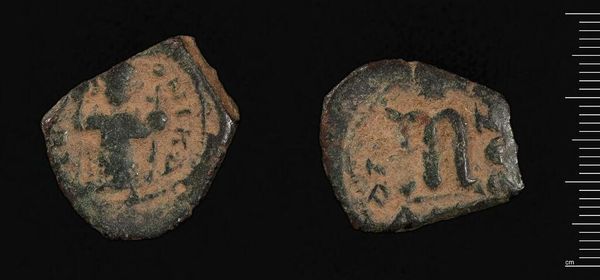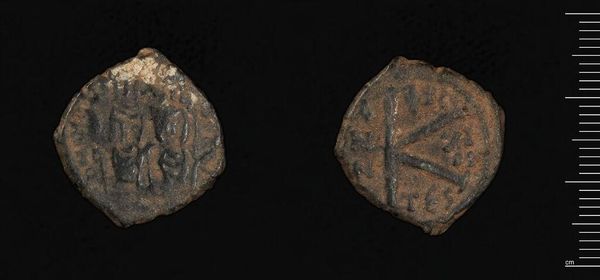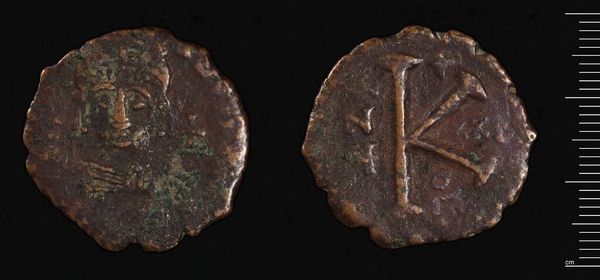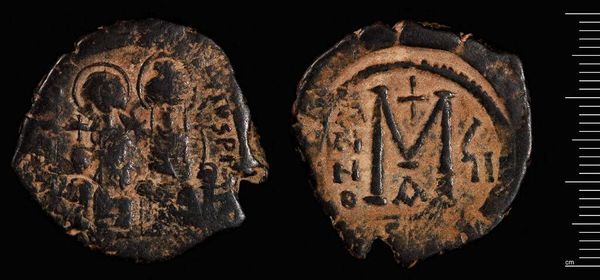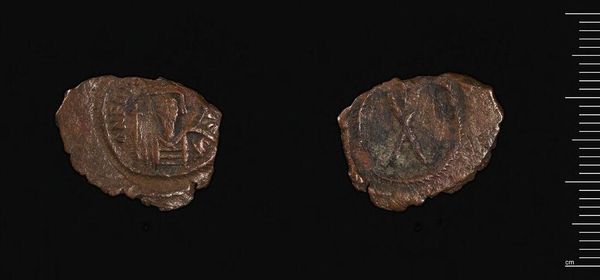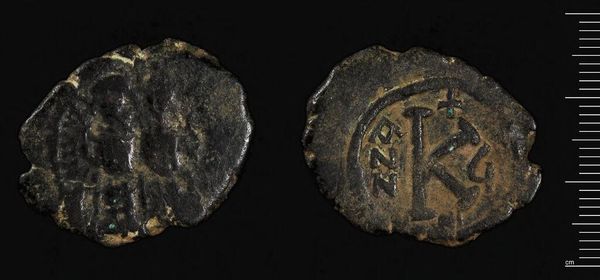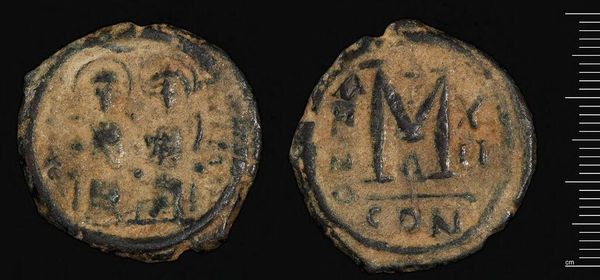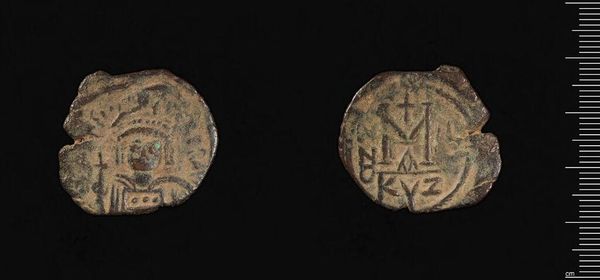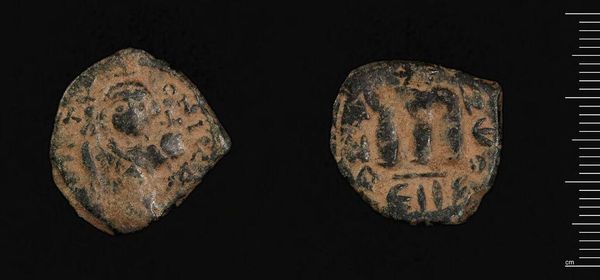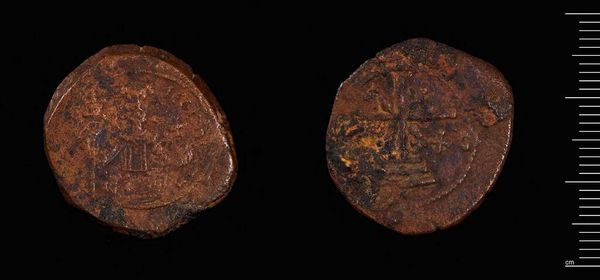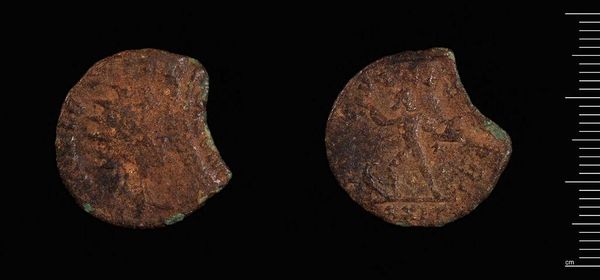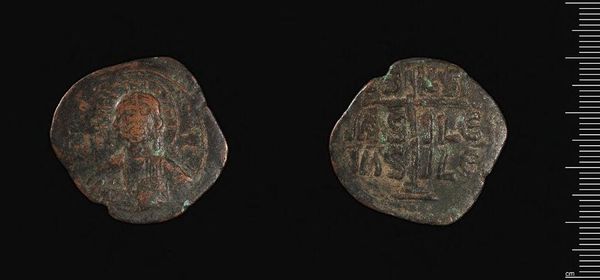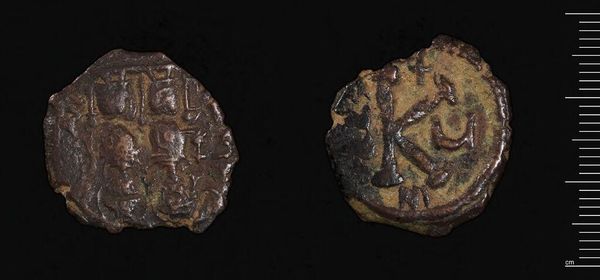
Dimensions: 8.84 g
Copyright: CC0 1.0
Curator: Let's examine this intriguing artifact, a Follis of Herakleios, minted in Constantinople. Its creation is attributed to Abd-al-Malik of the Umayyad Caliphate. Editor: The first thing that strikes me is its worn texture – it feels so tangible, like a story etched in metal. Curator: Precisely. The material itself, likely bronze, speaks volumes about the economy and trade networks of the era. The coin's design incorporates Byzantine imagery, yet was produced under Umayyad rule. Editor: It represents a fascinating cultural and political intersection, doesn't it? A symbol of power, but also of cultural exchange and negotiation. Whose faces do you see on the coin, and how do they reflect the power structure of the time? Curator: It also invites us to consider the labor involved in its production – the hands that mined the ore, crafted the die, and struck each individual coin. Editor: Absolutely. And in that labor, we see the seeds of complex social dynamics, empire, and the everyday lives of the people who used it. Curator: Indeed, material analysis opens a window into these unseen processes. Editor: A tiny object with a huge story to tell.
Comments
No comments
Be the first to comment and join the conversation on the ultimate creative platform.
